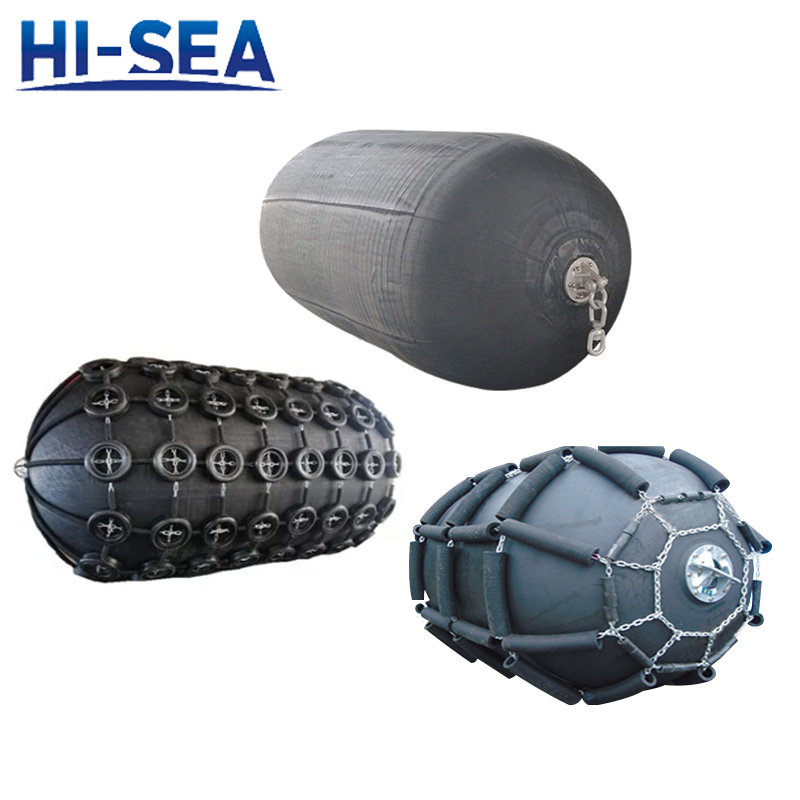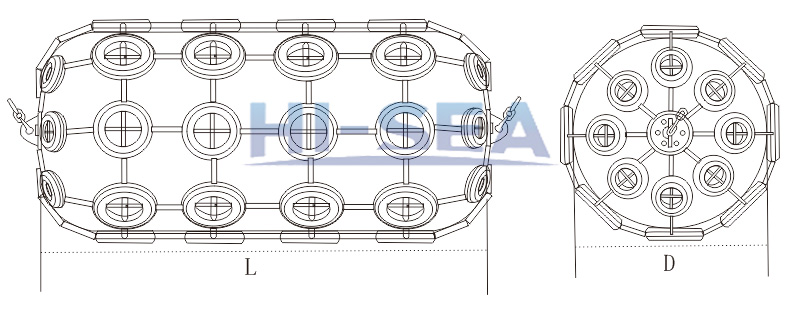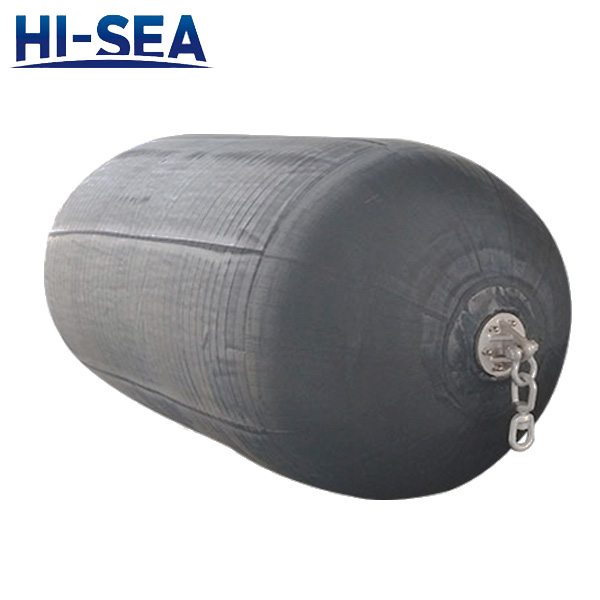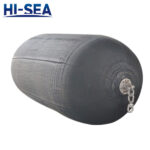
The size 1500×3000 of Yokohama fenders can be regarded as the middle standard size of the fenders. They are used for many large docks and vessels. Yokohama fenders are also called pneumatic fenders for they will be filled with air or hydrogen on working. This feature makes it float on the water.
The floating feature solves the most difficult problem for docks with large tidal variations. And the Yokohama fenders are gradually becoming more and more popular these years. In different situation, the Yokohama fenders can be added to different types of protection layers. Those layers can help to reduce the damage to the fender body so that its lifespan can be extended.
Yokohama fenders are manufactured with high-quality rubber materials for they need to endure large compression. The reinforced and wear-resistant rubber material can provide the fenders high energy absorption and low reaction force. And they can even absorb large shear forces.
The Yokohama fenders are connected with chains on both ends. Chains are flexible but only in a certain area. This feature of the chains is perfect for the installation requirement of the fenders.
Yokohama Fenders Drawing and Dimensions:

| Fender size
D×L
(mm)
|
Initial pressure 0.5kg/cm2 |
Initial pressure 0.8kg/cm2 |
weight |
| Guaranteed energy absorption (GEA)
[kNm] |
Reaction force at GEA deflection
[kN] |
Hull pressure at GEA deflection
[kN/m2] |
Guaranteed energy absorption (GEA)
[kNm] |
Reaction force at GEA deflection
[kN] |
Hull pressure at GEA deflection
[kN/m2] |
Fender body
[kg] |
Chain & tire net
[kg] |
Total
[kg] |
| 1500×3000 |
153 |
579 |
132 |
214 |
761 |
174 |
220 |
400 |
620 |
Features:
- Easy and fast to deploy
- Suitable for small and large tidal ranges
- Low hull pressure
- Low reaction force and reasonable reaction force even under excess load conditions
- Suitable for inclined berthing








 Sling Type Pneumatic Rubber Fenders(4500×12000)
Sling Type Pneumatic Rubber Fenders(4500×12000)